Hunting for gems in Iowa is a lot of fun and more fruitful than you might think. The state has some fantastic opportunities to go home with a bucket full of beautiful finds if you focus your hunt in the right places.
It’s entirely possible to amass a high-quality, diverse assortment of specimens, from vibrant favorites to unique native finds. Learning what visual clues to watch for and the specific locations to explore is your secret weapon for a successful trip that will yield a great variety of gemstones.
We’ll point you toward the most promising hunting grounds so you can spend less time searching and more time collecting. Prepare to discover the different dazzling types you might uncover and soon fill your collection with an impressive variety of Iowan specimens!
- The extensive local experience and understanding of our team
- Input from several gem hunting groups and organizations
- The accessibility of the mining locations
- Safety and potential hazards when collecting
- Private and public locations
- A desire to include locations for both experienced gem hunters and those who are just starting out
Overall we’ve been able to put together a great list that anyone can use to locate a lot of beautiful gems.
The Gemstones Found In Iowa You Can Mine
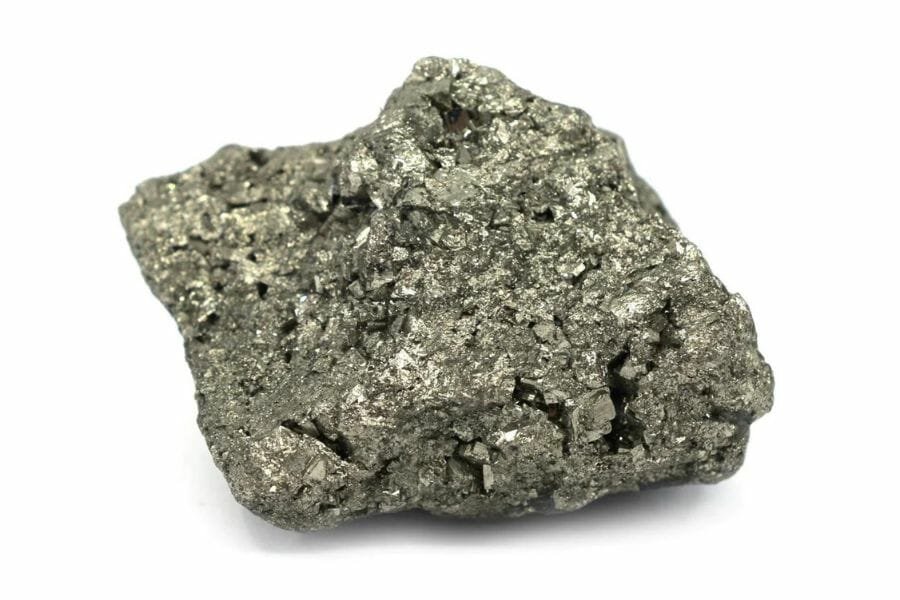
A significant advantage of this state is the availability of stunning gemstones. Each state is diverse regarding the gemstones found here and the locations they offer. We’ve written several guides to assist people in finding gems near them, so we can truly identify a suitable location when we see one! With the appropriate information and a little luck, you can find uncommon and rare gems in this area.
Sapphire
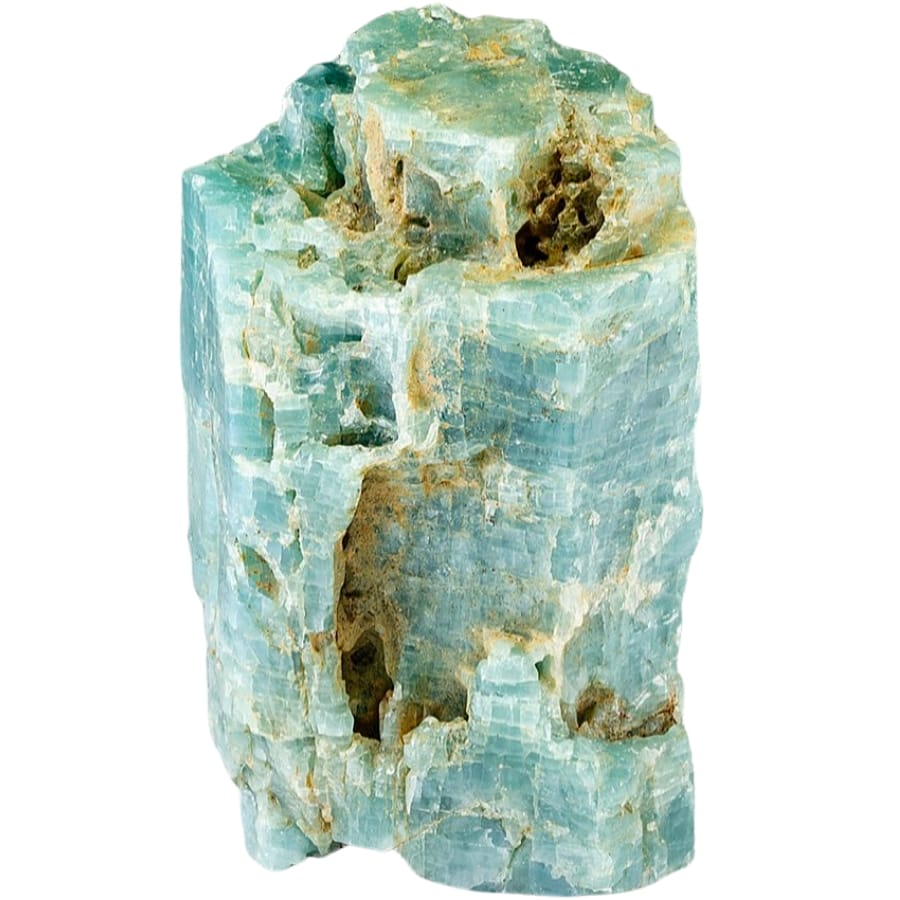
Sapphire is normally known for its stunning blue color. But did you know it can actually come in lots of different colors, like pink, yellow, and even clear? It’s a type of corundum, which is really hard— just behind diamonds on the Moh’s Scale.
It usually develops in places with a lot of heat and pressure, like deep underground or in areas where there’s volcanic activity. The main ingredients for sapphire are aluminum and oxygen.
Sometimes, other elements mix in, like iron or titanium, and that’s what gives it different colors. Sapphires are found in many parts of the world, often in places with ancient volcanic rocks or where the Earth’s crust is really thick.
If you’re curious about the price of sapphire, you can check out our article on that.
But to give you an idea, it’s valued for a bunch of reasons. Its beauty and the way it sparkles make them a top choice for jewelry, like engagement rings and necklaces. The blue sapphires are especially popular and can be really pricey.
Since sapphire is also super tough, it’s useful in some industrial things, like watches and scientific instruments.
Where you can find sapphire in Iowa
You can find fine pieces of gem-quality sapphire along the shoreline of the West Okoboji Lake.
Pearl
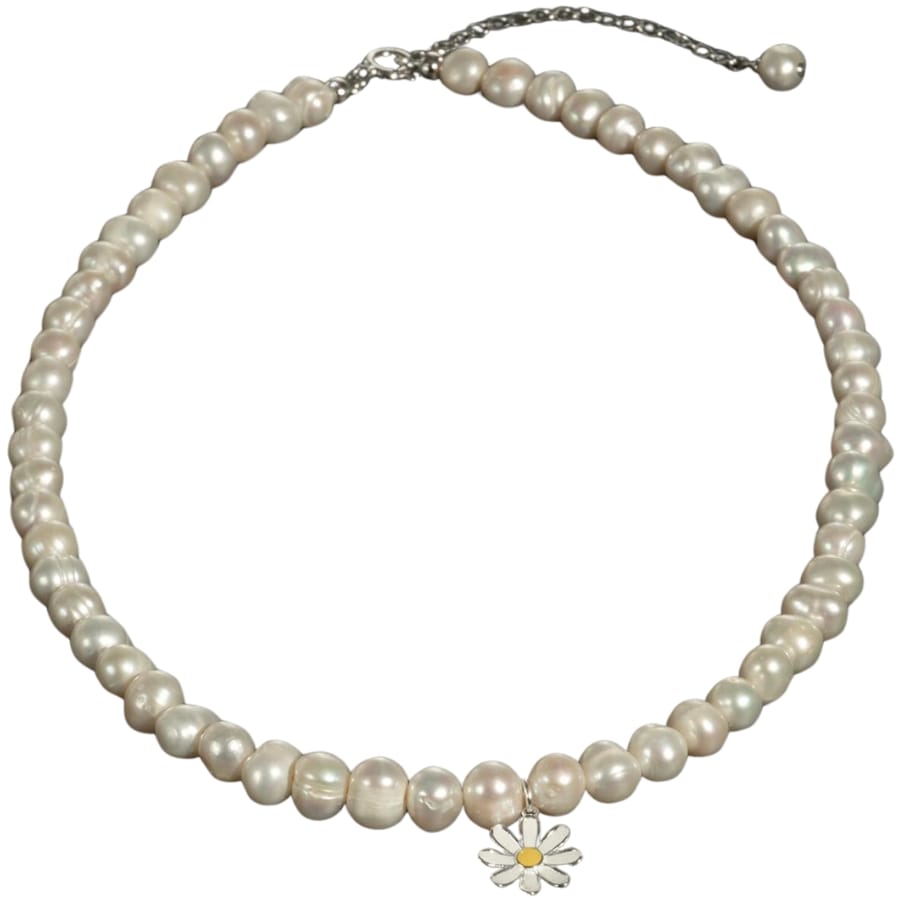
Pearls are special because they’re one of the few gems that come from living creatures: oysters and clams! They are known for their beautiful, shiny, smooth surface and can be white, cream, or even have hints of pink and blue.
When a tiny piece of sand or something similar gets inside an oyster or clam, the oyster or clam feels it like a little irritant. To protect itself, the oyster or clam covers this irritant with layers of a shiny substance called nacre.
This is the same stuff that lines the inside of their shells. Over time, these layers build up and form a pearl. That’s why they are often found in oceans, rivers, and lakes.
As a symbol of elegance and class for centuries, the value of pearl can soar. They’re just naturally beautiful. Their shine and smoothness make them perfect for all kinds of jewelry.
They’re also special because each one is unique. No two pearls are exactly the same, which makes them even more special. People also value pearls for their connection to nature and the ocean.
Where you can find pearl in Iowa
Pearl is quite plenty in our state, and if you want to find them, here are some areas you can visit:
- Mississippi River and other rivers, including the Cedar, Wapsipinicon, Maquoketa, Turkey, Iowa, and Skunk, as well as many lakes
- Harper’s Ferry
- Muscatine area
Moonstone
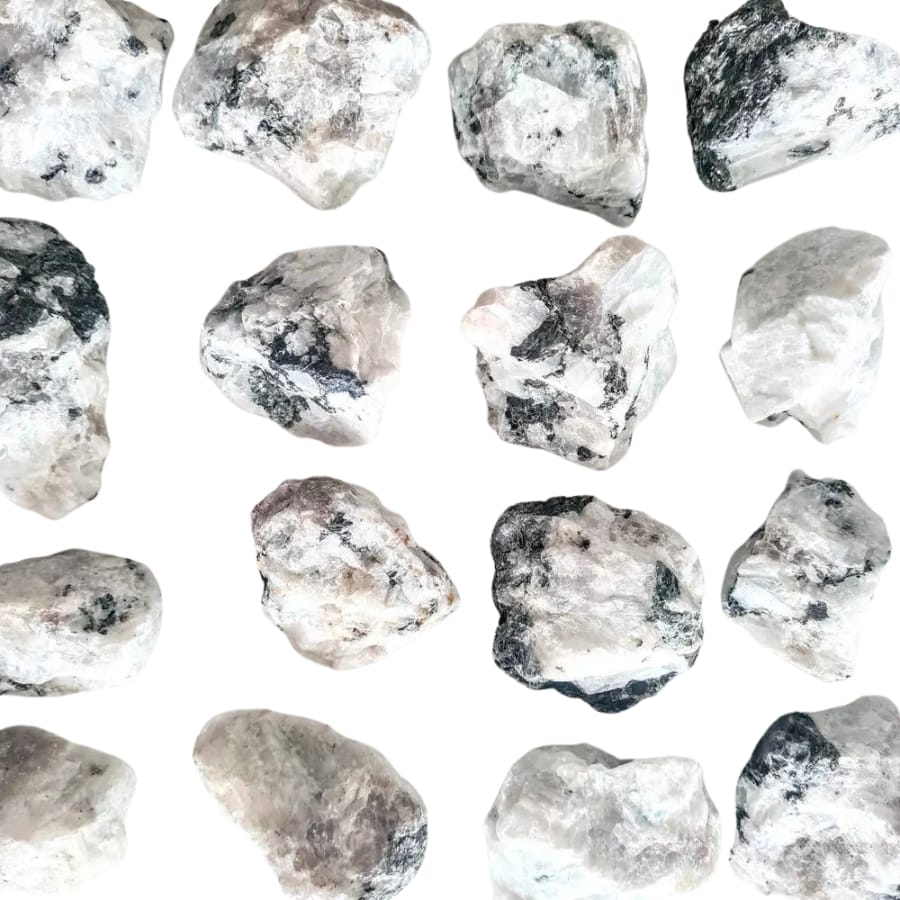
Moonstone is a magical-looking gem that has a special glow. This glow, called adularescence, makes it look like it’s glowing from the inside, kind of like moonlight shining on water. It comes in colors of white, blue, peach, and even black.
It’s part of the feldspar group, which is a type of mineral that makes up a lot of the Earth’s crust. Moonstone forms when two different types of feldspar mix together while they’re still hot and slowly cool down over time.
As they cool, the feldspar separates into thin layers. Light bounces off these layers and creates its glowing effect. Moonstone is found in several parts of the world, like Sri Lanka, India, and, of course, the United States.
You might ask, “Is moonstone expensive?” It really depends. Its value comes from its unique look and the quality of its glow. High-quality moonstones with a clear color and strong glow are usually more valuable and can be quite expensive.
People love this gem not just for its beauty, but also because it has a kind of mysterious and romantic feel to it. It’s been used in jewelry for centuries and is often associated with love and good fortune.
Where you can find moonstone in Iowa
Despite being valuable, moonstone is pretty abundant in our state. Some of the areas where you can find them are:
- Dubuque area gravels
- Along the Mississippi River in Bellevue
- Hahn Brothers Gravel Company
Calcite
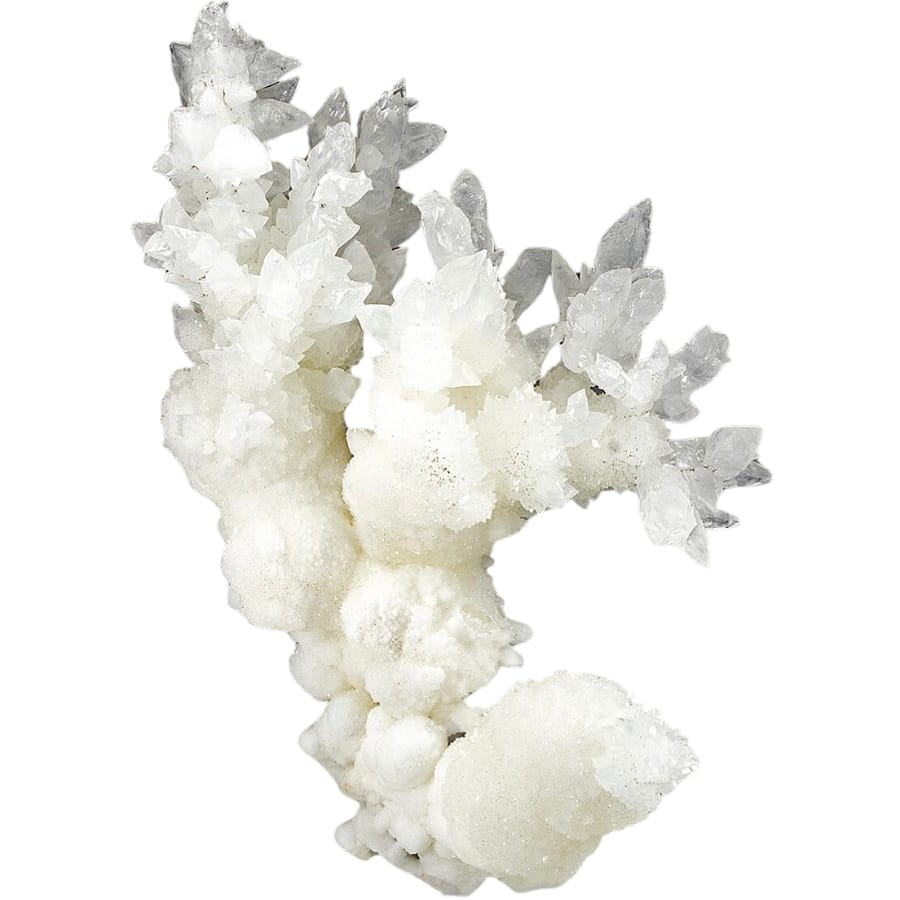
Calcite is a super common crystal. It’s made from calcium carbonate, which is the same stuff in chalk and limestone. It can come in a lot of different colors, like clear, white, pink, blue, and even green.
It often forms in sedimentary rocks or in the shells of sea creatures. When these animals die, their shells pile up on the sea floor. Over time, these shells get packed down and turn into rock. Sometimes, hot water with dissolved minerals can flow through these rocks and form calcite crystals.
Another way it forms is in caves. When water dripping through the roof of a cave evaporates, it leaves behind calcite, which slowly grows into stalactites and stalagmites.
Calcite’s price is heavily influenced by its many uses in a lot of everyday things. It’s ground up to make cement and is also used in things like toothpaste and antacids.
But calcite isn’t just useful; it’s also really mesmerizing. People love collecting different kinds of this crystal because it can form such amazing shapes and colors. It’s also used in jewelry and as decoration.
Where you can find calcite in Iowa
Breathtaking pieces of calcite can be found in many areas here, including:
- Guttenburg area
- Eagle Point Park
- Countywide in Linn County
Chalcedony
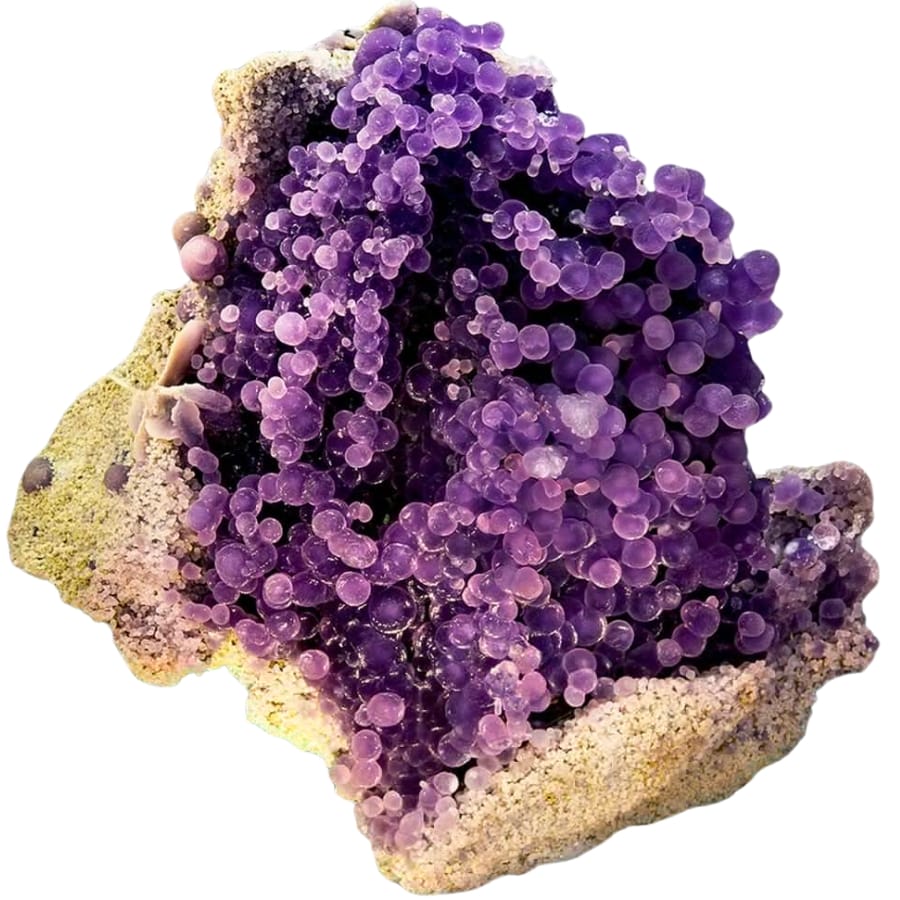
Chalcedony is also a part of the quartz family, but what makes it unique is its looks. It’s not clear like typical quartz, but instead has a waxy, almost soft appearance. It comes in lots of different colors and, sometimes, it’s even multi-colored.
When silica-rich water flows through cracks and spaces in rocks, this crystal starts to form. This water deposits layers of microscopic quartz crystals over time. These layers stack up and eventually form chalcedony.
Chalcedony is found in many places around the world, often in areas with volcanic rocks or old, dried-up riverbeds.
As for chalcedony’s value, it’s often used in jewelry, like necklaces and rings, because it can be cut and polished to show off its colors and patterns.
Aside from its use in jewelry, chalcedony is also interesting for historical and cultural reasons. Different cultures have used it for things like seals and talismans, believing it has protective properties.
Where you can find chalcedony in Iowa
You can find chalcedony crystals inside some Keokuk geodes. You can also find them in other areas, such as:
- Lime Creek and its tributaries
- Bear Creek and its tributaries
- Gravels in Muscatine
Quartz
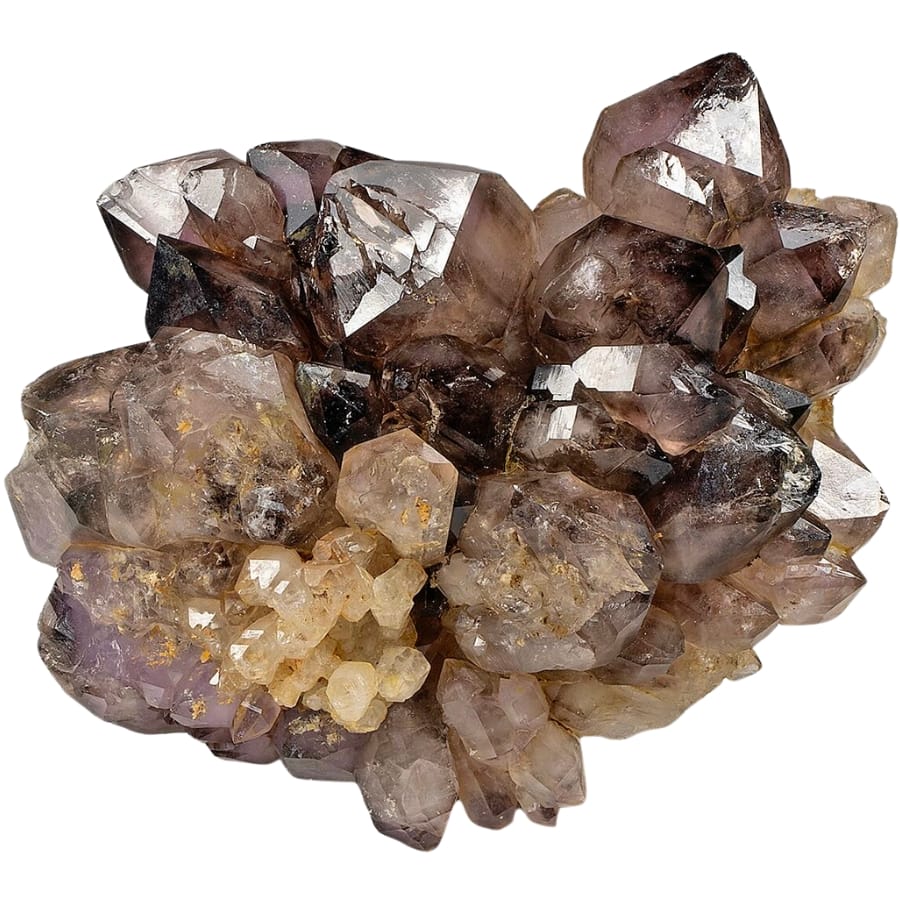
Quartz is found all over the world and is the second most abundant mineral in Earth’s crust. It’s made of silicon and oxygen, and it can come in a lot of different colors, like clear, pink, purple, and even black.
It often starts deep underground. When hot, mineral-rich water cools down, the silicon and oxygen in the water start to stick together and form crystals. This can happen in cracks and spaces in rocks.
These crystals grow into quartz over a long period. Sometimes, this crystal also forms in cooler conditions, like near the surface. That’s why it’s found in many different kinds of rocks, from volcanic rocks to sandstone and even in river beds.
If we talk about the value of quartz, you should know it’s loved for lots of reasons. It’s been used in jewelry for thousands of years because of its appeal and beauty. Some types of quartz, like amethyst and citrine, are especially popular.
Quartz is also used in making glass, concrete, and even electronics like watches and computers. That’s because it can turn pressure or electricity into vibrations.
Where you can find quartz in Iowa
Like chalcedony, quartz is also often found inside Keokuk geodes here. But aside from that, you can also explore the following sites to find quartz:
- Orient area
- Burlington creek gravels
- Muscatine area
Pyrite
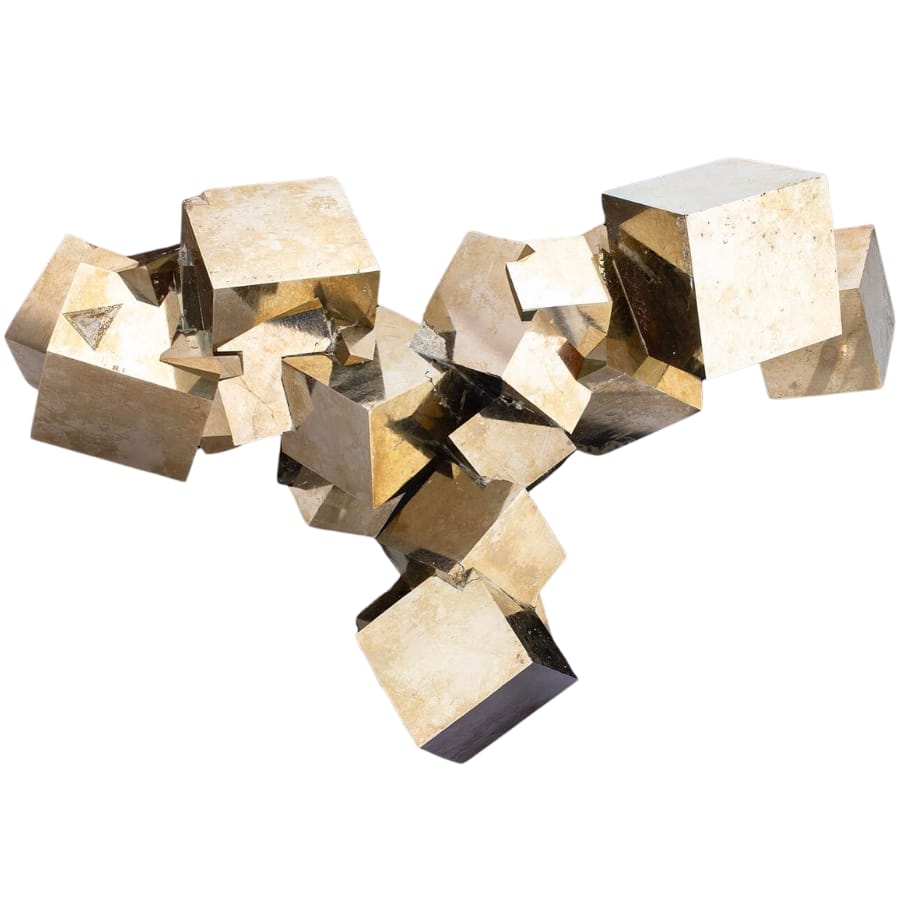
Often called “fool’s gold”, pyrite comes in a shiny, metallic gold color. It’s made of iron and sulfur and often looks like perfect little cubes or other neat geometric shapes.
This crystal forms in places where there’s a lot of sulfur and iron. When these elements mix together in water, they start to form pyrite.
This can happen in a bunch of different environments, like in coal beds, or in rocks that are forming at the bottom of the ocean. Sometimes, pyrite also forms when other types of minerals break down and leave iron and sulfur behind.
Found in many parts of the world, pyrite often forms alongside other minerals like quartz or calcite.
When it comes to the price of pyrite, among the factors that come into play is its uses. Its shiny, metallic look makes it popular for jewelry and decorative items. It’s also a favorite among rock collectors because of its unique crystal shapes.
It also used to be important in industry. It was used to make sulfuric acid, which is used in a lot of different products.
Where you can find pyrite in Iowa
Several areas bear pyrite and these include:
- Coal City coal mine dumps
- County-wide in Appanoose County
- Pershing Mine dump
Selenite
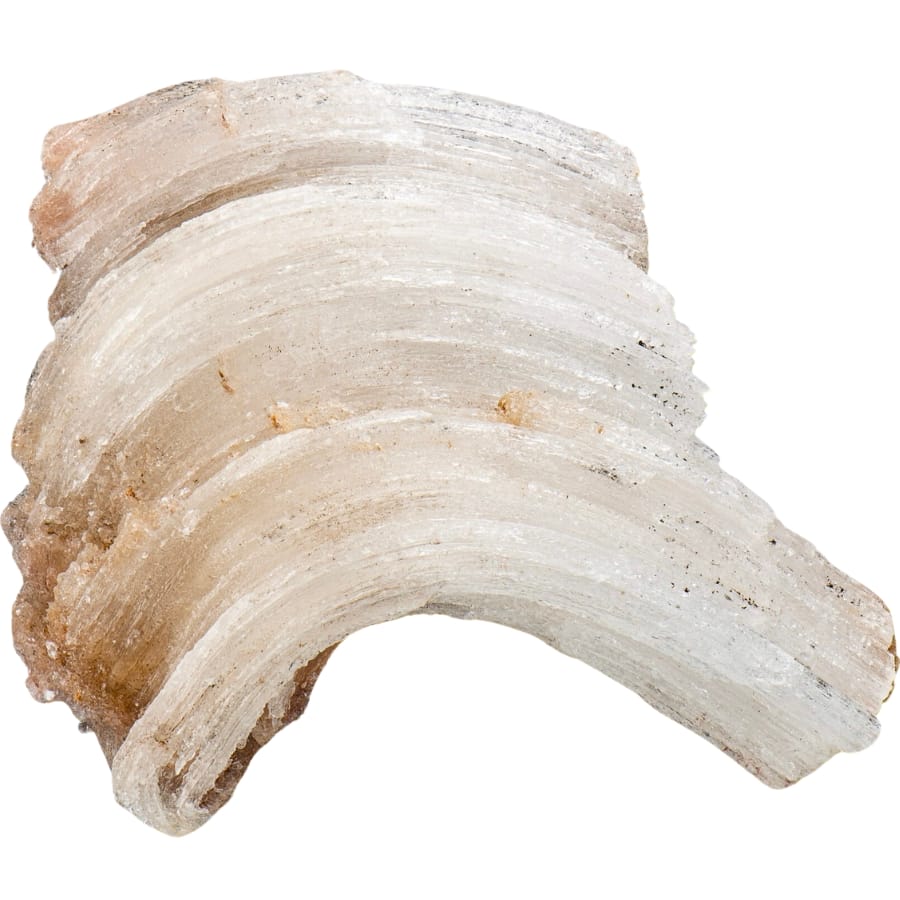
Selenite is a form of gypsum, which means it’s made from calcium sulfate and water. It’s usually clear and can be so shiny and transparent that it almost seems like glass. Sometimes, it also forms in long, flat crystals that look like swords or wands.
It forms in places where there’s evaporating saltwater, like salty lakes or seas. When the water in these places starts to dry up, it leaves behind minerals, including selenite.
This crystal can also form in caves where water drips down and evaporates, leaving the mineral behind. It’s found in many parts of the world, often in dry, desert areas or places with a lot of saltwater.
As for the worth of selenite, its clear, glass-like appearance makes it sought-after for decoration and in jewelry. Some people even use it in their homes for its look and feel.
In history and culture, selenite has also been seen as a special stone. Some people believe it has calming properties and can bring peace and clarity. This has made it popular in various traditions and practices.
Where you can find selenite in Iowa
Among the areas where you can find selenite here are:
- Albia area coal mine dumps
- Brompton area coal mine dumps
- Foster area coal mine dump
Agate
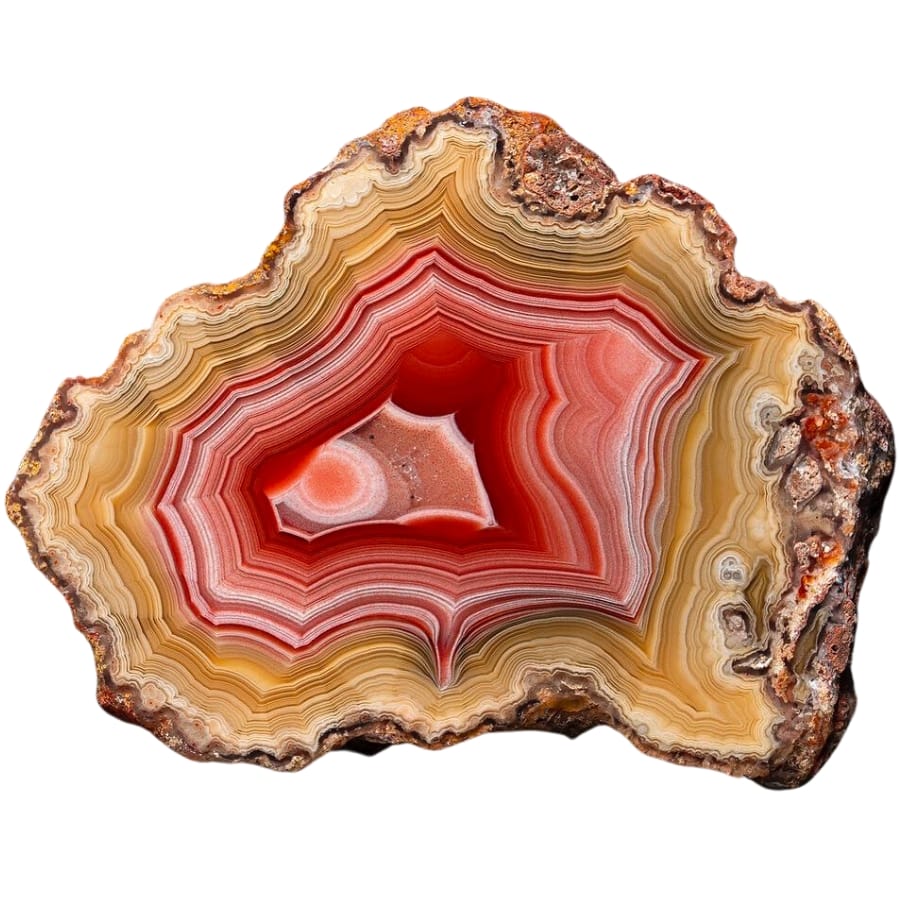
Agate is a kind of quartz that’s renowned for its amazing patterns and colors. It can have stripes, swirls, or spots in all kinds of colors like red, blue, green, or even purple. These patterns make every piece of agate unique, like a natural piece of art.
Its formation usually happens in volcanic rocks or ancient lava flows. When cracks or holes in these rocks get filled with mineral-rich water, layers of quartz start to form inside these spaces.
These layers build up over a long time, and the different minerals in the water give each layer different colors and patterns. That’s how you get the stripes in agate.
You can find this gem in areas where there used to be volcanic activity or where there are old lava flows. Each region can have its own types of agate with unique patterns and colors.
Agate’s value is influenced by many factors, including how we use it. It’s pretty to look at and its colors and patterns can be stunning. That’s why people use it to make jewelry, like necklaces and rings, or decorative items.
Where you can find agate in Iowa
Agate is very abundant in our state and you can find it in a ton of places, such as:
- Countywide in Bremer County
- Countywide in Benton County
- Countywide in Black Hawk County
Jasper
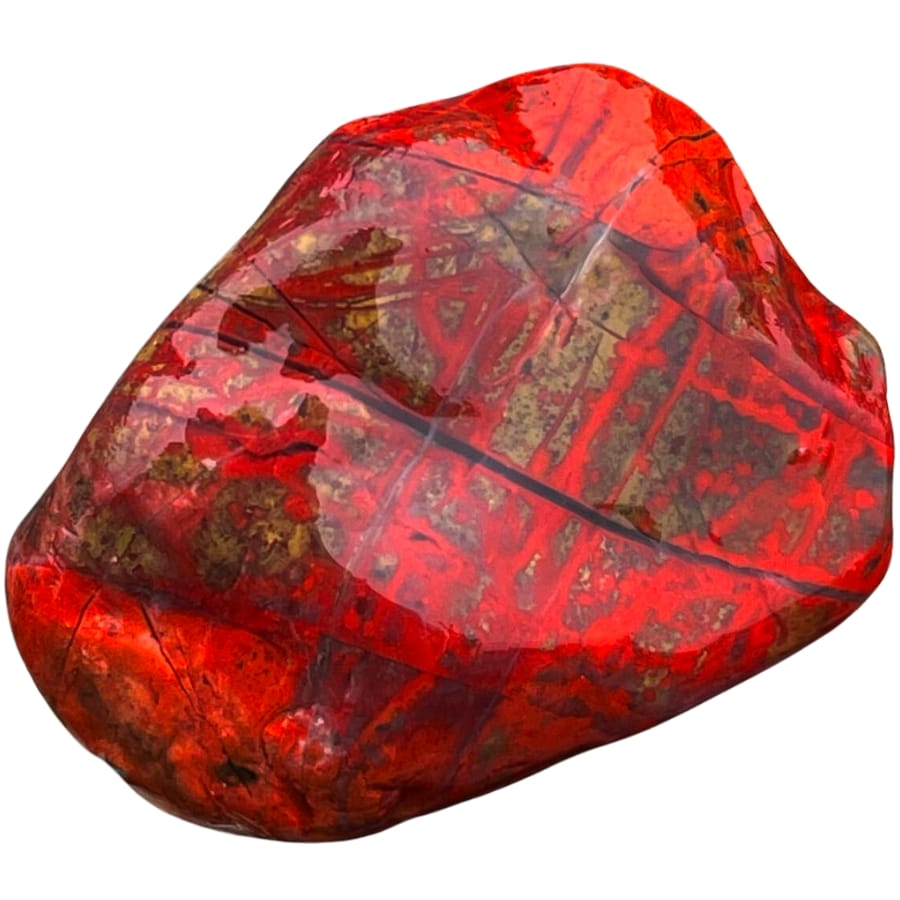
Jasper, another type of quartz, is known for being colorful and having all sorts of patterns. You might see it in reds, yellows, browns, and greens, often with streaks or spots that make it look like a painting.
It starts to grow when silica-rich sediment or volcanic ash gets mixed with other minerals. This mixture then hardens over time, turning into jasper. The different minerals and the way they mix give this gem a variety of colors and patterns.
Jasper can be found in many places around the world, often in areas where there were once hot springs or volcanic activity. It forms in layers and can be found in nodules or as fillings in cracks and gaps in other rocks.
Talking about jasper’s price, it’s valued for a bunch of reasons. It’s really pretty and unique, and its different colors and patterns make it a favorite for jewelry and decorative items.
But jasper is not just about looking good. It’s also interesting for people who study rocks and minerals. Rock collectors and hobbyists also value this gem because finding and identifying its different types can be like an exciting puzzle.
Where you can find jasper in Iowa
Just like agate, jasper is also abundant in our state. Below are just some of the areas you can explore for it:
- Turkey River
- Northern Gravel Company
- Burlington area gravel-dredging operations and gravel pits
Gypsum
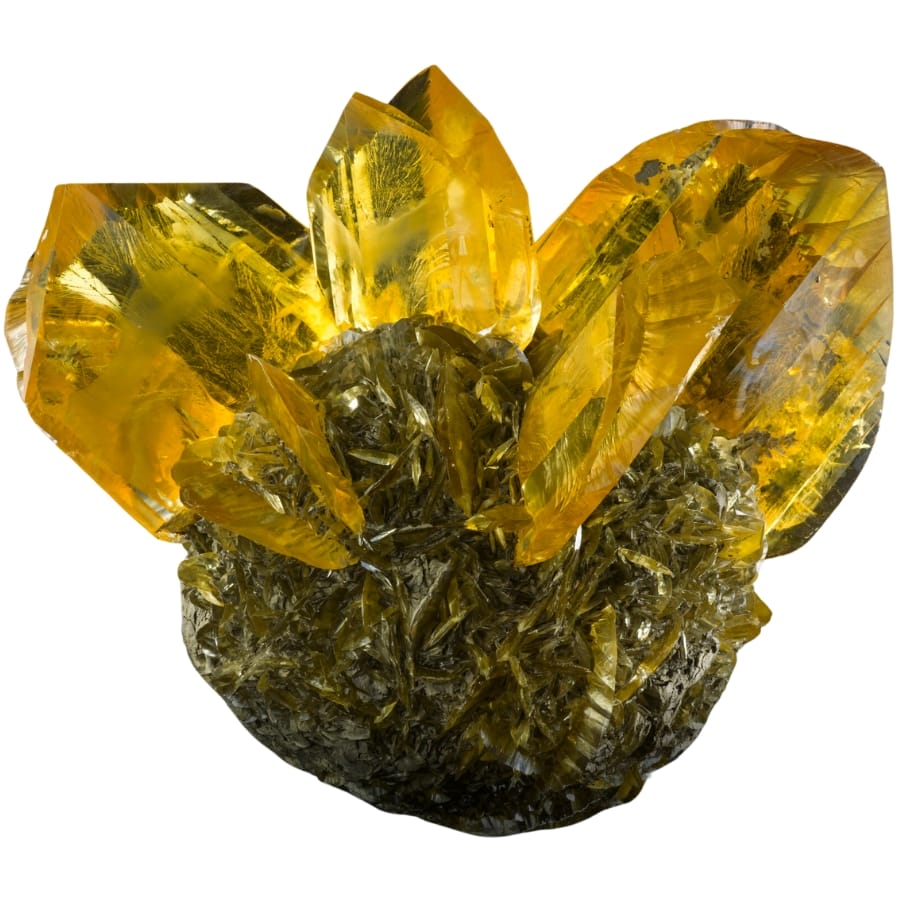
Gypsum is more common than you might think. It’s made from calcium sulfate and water. It can be clear, white, or even have a slight color like pink or yellow, and it’s known for being soft compared to other gems.
The formation of gypsum usually happens in places where there are evaporating saltwater lakes or seas. When the water in these lakes or seas starts to evaporate, it leaves behind minerals, including gypsum.
This can also happen in underground caves where water evaporates and leaves gypsum on the walls or ceiling. Sometimes, it can grow really big and look like shiny, clear swords or plates.
It’s used in a lot of everyday things. Have you ever seen drywall in houses? That’s mostly made of this gem! It’s also used in plaster and even in some kinds of makeup.
But gypsum isn’t just useful, it’s also really neat to look at. The way it forms can be quite beautiful, and people like to collect different types of gypsum.
Where you can find gypsum in Iowa
You can explore the area quarries of Fort Dodge and Centerville to find specimens of gypsum.
Carnelian
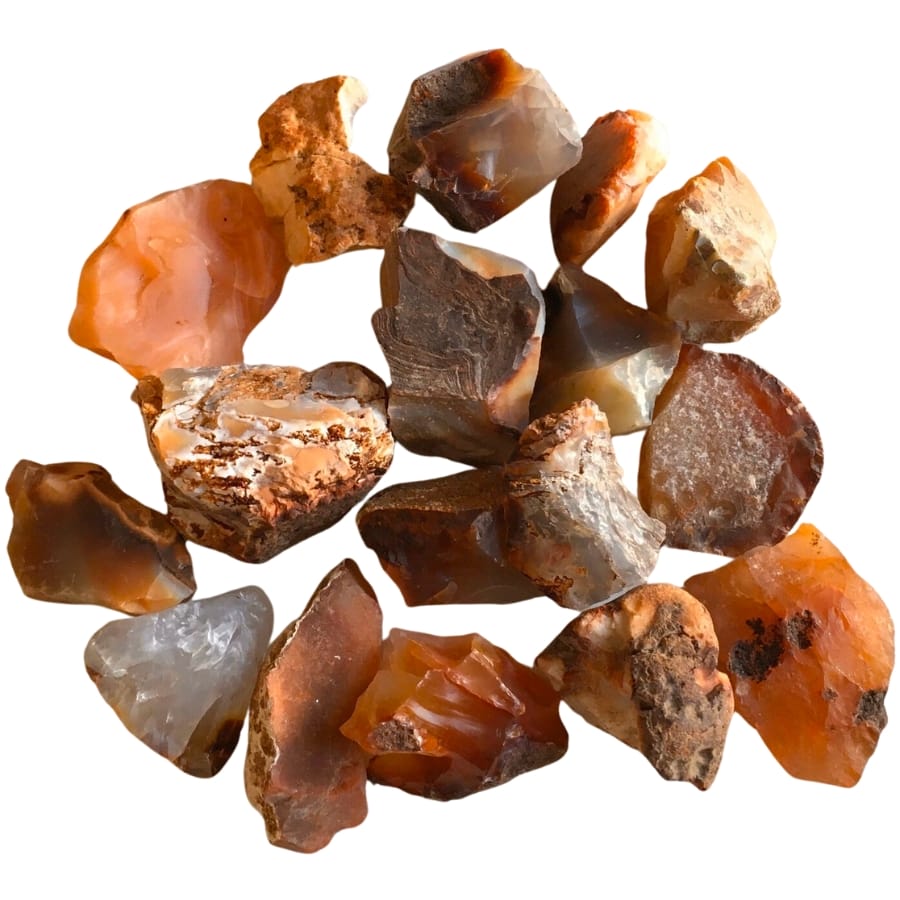
Like agate and jasper, carnelian is a type of quartz. It’s known for its beautiful red, orange, or brown colors. It can range from almost clear to nearly opaque and often has a glassy or slightly waxy look.
It starts with silica-rich rocks. As groundwater moves through these rocks, it dissolves some of the silica. This silica-rich water then gets into spaces in the rock and starts to cool and harden.
If there are iron impurities in the water, they give the carnelian its red or orange color. Carnelian is found in many parts of the world, often in areas with volcanic rocks or places that were once hot and dry.
Regarding the worth of carnelian, it’s valued for a few different reasons. Its warm colors make it a popular choice for jewelry, like rings, necklaces, and bracelets. It can really catch the eye and add a pop of color.
Throughout history, people have also valued it for more than just its beauty. In ancient times, it was believed to bring good luck, protection, and even help calm anger.
Where you can find carnelian in Iowa
Carnelian naturally occurs in many areas of our state, including:
- Black Company gravel operation
- Burlington area gravel-dredging operations and gravel pits
- Molo Sand and Gravel Company
Marcasite
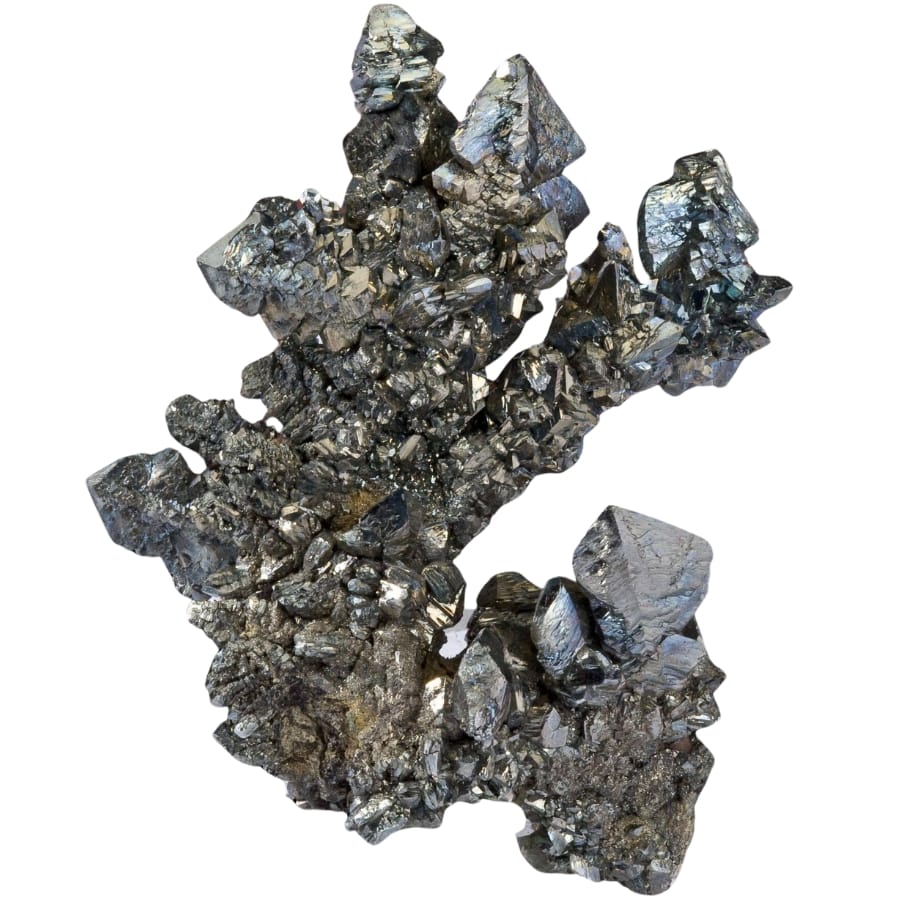
Marcasite is actually iron sulfide, the same as pyrite (which we will discuss more below), but it forms in a different way. It’s usually a pale, brassy yellow color and has a metallic shine.
It forms in sedimentary rocks, like limestone, or in places where there’s a lot of organic material, like coal beds. When iron and sulfur in the ground mix together and react with water, marcasite starts to form.
It can also happen when hot, mineral-rich water flows through cracks in the rocks underground.
Now, the value of marcasite is really interesting. For starters, it’s been used in jewelry for centuries.
People love its sparkly, metallic look, and it’s often cut into small stones for rings, earrings, and necklaces. It has a vintage feel to it that’s really popular in certain styles of jewelry.
Where you can find marcasite in Iowa
There are different spots where you can find marcasite here. Some of them are the following:
- Countywide in Marion County
- Tyrone area coal mine dumps
- Pershing Mine dump
Amethyst
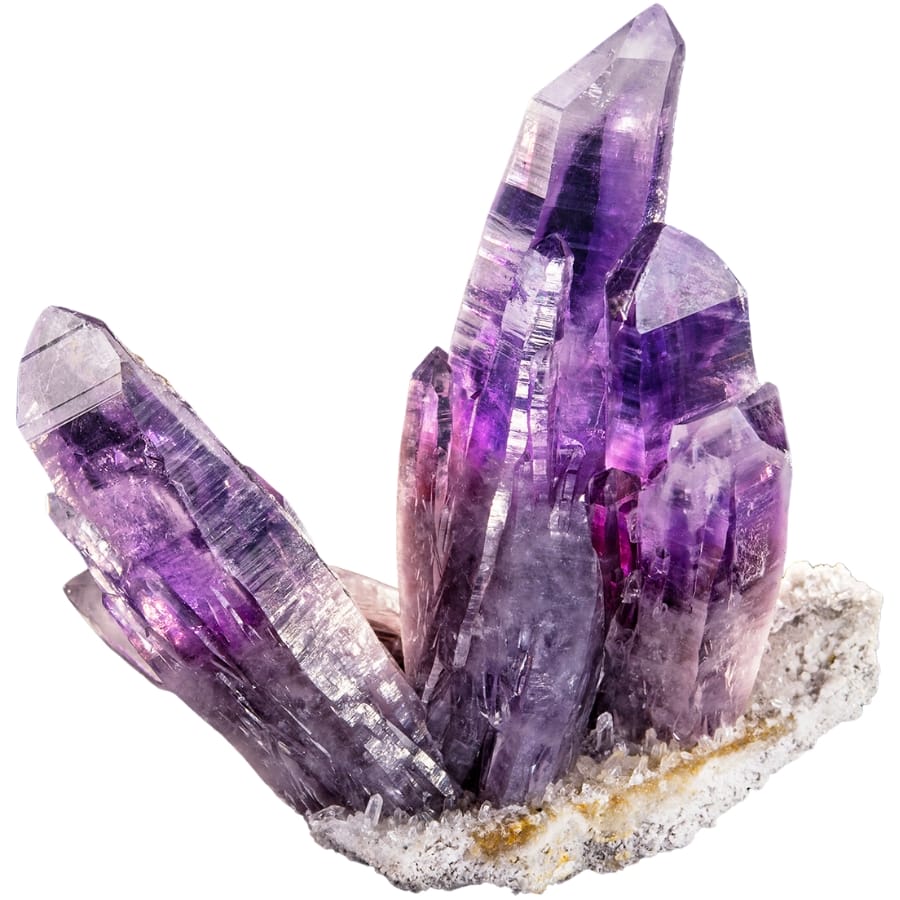
Amethyst is a type of quartz with a stunning purple color. This color can range from a light lavender to a deep, rich purple. Sometimes, you might even see an amethyst with a mix of purple and white.
Its formation all starts deep underground, where there are cavities or pockets in the rocks. These pockets get filled with hot, mineral-rich water. Over time, the minerals in this water start to form crystals.
Quartz is one of these minerals. When it has traces of iron in it and it’s exposed to radiation from the rocks around it, it turns into the purple amethyst we see. This gem is found often in volcanic rocks or areas with a lot of geological activity.
Amethyst’s price is dictated by several factors. Its beauty makes it popular in jewelry. People love wearing this gem in rings, necklaces, and earrings because of its gorgeous color and the way it sparkles in the light.
In history and culture, it’s had a lot of significance, too. Some people believed it could protect them from bad thoughts and help them stay calm and clear-headed.
It’s even been used in royal crowns and jewelry because of its beauty and supposed powers.
Where you can find amethyst in Iowa
You can find sparkling amethysts inside geodes from Keokuk.
Galena
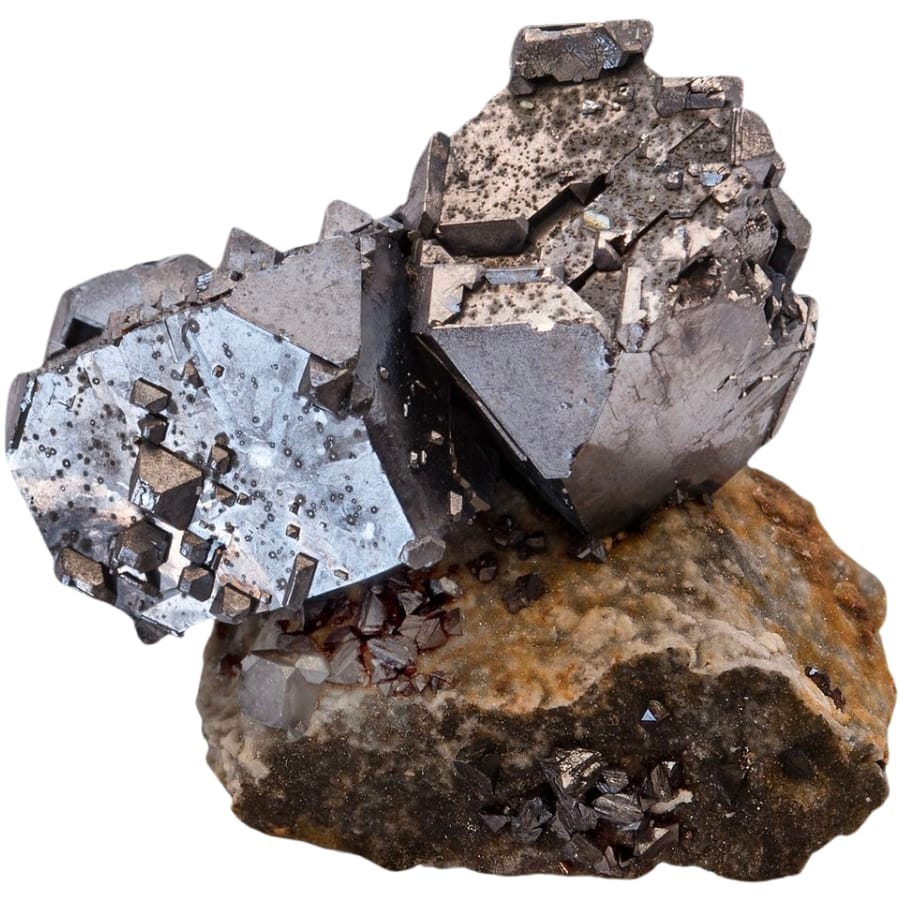
Galena might not be as famous as gold or diamonds, but it has its own story. It’s the main source of lead, and it usually looks like shiny, metallic gray cubes or clusters of cubes. It’s heavy for its size because it’s made mostly of lead.
It starts forming deep underground in places where there are hot fluids moving through the rocks. These fluids have lots of different minerals dissolved in them. When they cool down, the minerals start to come out of the fluid and form crystals.
Over a long time, these crystals grow and become galena. This rock forms in places where there’s a lot of sulfur and lead in these fluids.
As for its value, galena has been mined for a long time because it’s the most important source of lead, a metal that we use in a lot of different things like batteries, bullets, and even pencils and paint in the past.
But it’s not just about the lead. Galena sometimes also contains silver, which makes it even more valuable.
Where you can find galena in Iowa
Among the spots you can explore if you want to find galena in our state are the area mines of New Albin and the quarries and mining dumps in Clayton Coun
Our Favorite Places For Gem Mining in Iowa
We’ve established that these are the top locations in the state for mining gems. It would be best to visit these remarkable areas to learn more about hunting gemstones and see them yourself. We also provided recommendations for areas where kids can learn about and experience the pleasure of gem hunting.
Always Confirm Access and Collection Rules!
Before heading out to any of the locations on our list you need to confirm access requirements and collection rules for both public and private locations directly with the location. We haven’t personally verified every location and the access requirements and collection rules often change without notice.
Many of the locations we mention will not allow collecting but are still great places for those who love to find beautiful rocks and minerals in the wild without keeping them. We also can’t guarantee you will find anything in these locations since they are constantly changing.
Always get updated information directly from the source ahead of time to ensure responsible rockhounding. If you want even more current options it’s always a good idea to contact local rock and mineral clubs and groups
Ledges State Park
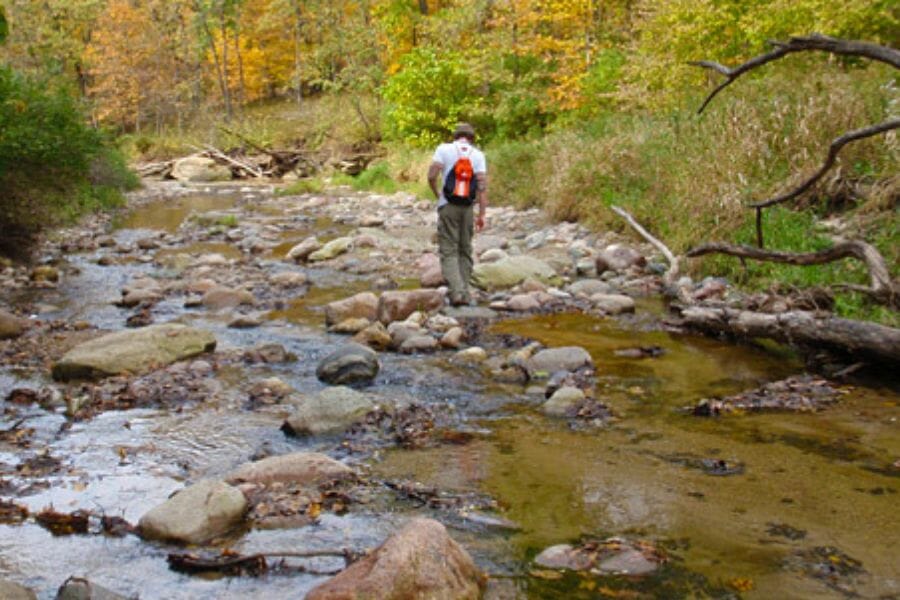
1515 P Ave, Madrid, IA 50156, United States
Ledges State Park is located in Boone County and is a popular spot for discovering gems. This park features 500 acres of rugged terrain with cliffs and deep ravines, where gem hunters can explore and dig for gems and minerals. Ledges State Park is a great place to find rare gemstones in the streams of this beautiful area.
The Types Of Gemstones Found At Ledges State Park
In this area, you may often find the following gemstones:
- Calcite
- Dolomite
- Gypsum
- Quartz
The Best Time To Visit Ledges State Park
The best time to visit Ledges State Park is from April through October. During this time, the park’s streams and creeks are stocked with various gems and fossils that can be found by panning or sluicing. The park also offers guided tours throughout the summer months, so gem hunters can learn more about where to search for gems and get tips on finding their treasures.
If you want REAL results finding incredible rocks and minerals you need one of these 👇👇👇
Finding the coolest rocks in isn’t luck, it's knowing what to look for. Thousands of your fellow rock hunters are already carrying Rock Chasing field guides. Maybe it's time you joined the community.
Lightweight, mud-proof, and packed with clear photos, it’s become the go-to tool for anyone interested discovering what’s hidden under our red dirt and what they've already found.
Join them, and make your next rockhounding trip actually pay off.
What makes it different:
- 📍 Find and identify 140 incredible crystals, rocks, gemstones, minerals, and geodes across the USA
- 🚙 Field-tested across America's rivers, ranchlands, mountains, and roadcuts
- 📘 Heavy duty laminated pages resist dust, sweat, and water
- 🧠 Zero fluff — just clear visuals and straight-to-the-point info
- ⭐ Rated 4.8★ by real collectors who actually use it in the field
Maquoketa Caves State Park
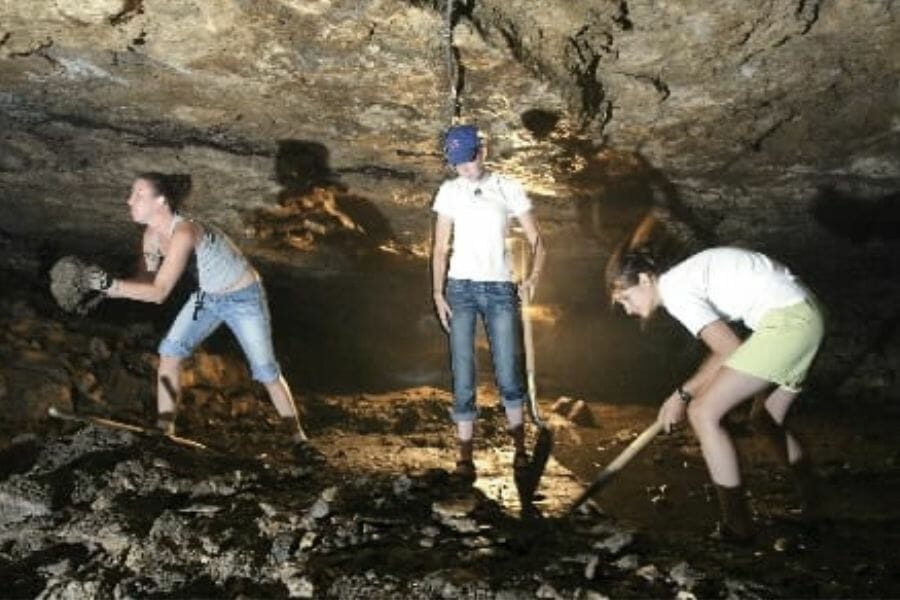
9688 Caves Rd, Maquoketa, IA 52060, United States
Maquoketa Caves State Park is home to some of the unique gem mining experiences in the Midwest and one of the best places for amazing crystal hunting in Iowa. The park’s caves are filled with various rocks and gems. The park also offers gem identification services to help gem miners identify what they have found. With its unique geology and stunning views of the surrounding landscape, Maquoketa Caves State Park is an excellent place to explore and discover some truly remarkable gems!
The Types Of Gemstones Found At Maquoketa Caves State Park
Some of the hidden gems found here include the following:
- Agate
- Dolomite
- Quartz
It’s very easy to confuse some of the more common gems out here, so we created helpful guides to telling them apart:
The Best Time To Visit Maquoketa Caves State Park
The best time to visit Maquoketa Caves State Park is during the late spring and summer months. The weather is typically mild, and the ground is dry enough to search for gems.
Big Creek State Park
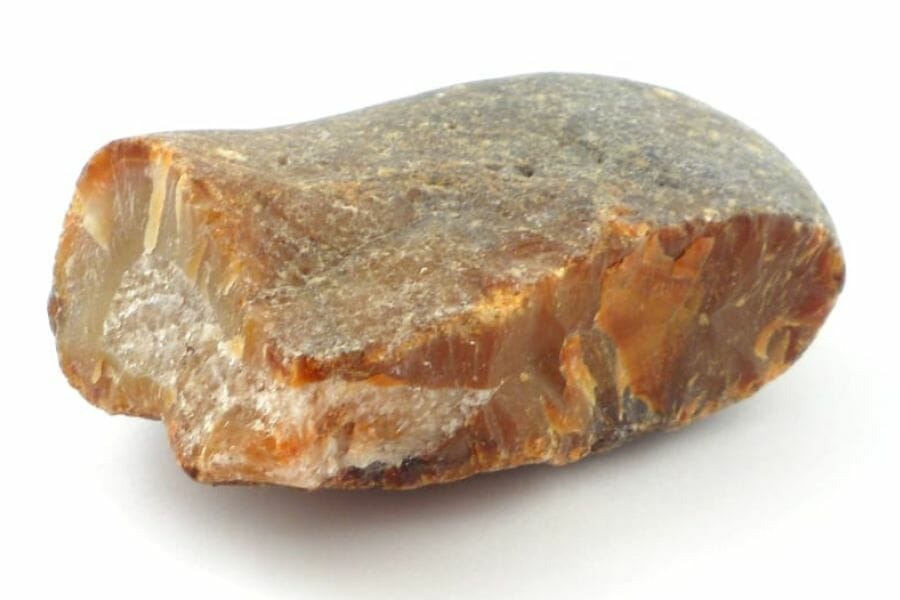
8794 NW 125th Ave, Polk City, IA 50226, United States
Big Creek State Park is one of the most popular state parks in the state and offers a variety of activities for visitors to enjoy. The park has over 1,500 acres of land and includes a lake, wetlands, woodlands, and prairies, where gem hunters can look for gemstones.
When we visited this state park, they suggested we go to their on-site nature center with educational programs on the area’s geological features. After experiencing what the state park offers, we highly recommend hunting for gems here.
The Types Of Gemstones Found At Big Creek State Park
The area is home to a large number of rare gems. Here are some of the gemstones found here:
- Agate
- Jasper
The Best Time To Visit Big Creek State Park
The best time to visit Big Creek State Park to hunt for gems is May to August. The warmer temperatures and longer days make it easier to search for gems. The park also offers gem hunters to do mining activities during the spring and fall, but the weather can be unpredictable.
Crystal Cave Lake – Great for kids
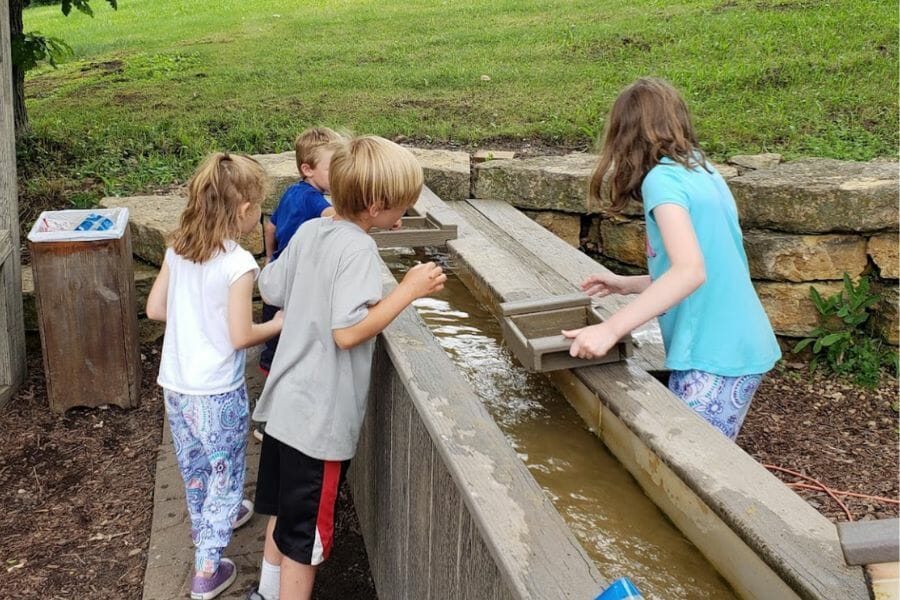
6684 Crystal Lake Cave Rd, Dubuque, IA 52003, United States
Crystal Cave Lake Gem Mining offers gem miners the opportunity to experience the thrill of discovering real gems. You can purchase buckets of gem mix and use specialized mining equipment to search for precious gems. Once you find some, you can take them home as a souvenir.
Additionally, they offered us educational classes and field trips to learn more about the geology and history of gems when we went to this area. We also received detailed instructions on properly using the mining equipment and safety tips for avoiding accidents or injuries while searching for gems.
The Types Of Gemstones Found At Crystal Cave Lake
There are various gems in this location. Some of the gemstones we’ve discovered here are:
- Agate
- Amethyst
- Calcite
- Celestite
- Chalcedony
- Quartz
- Rhodochrosite
- Smoky Quartz
The Best Time To Visit Crystal Cave Lake
Spook Cave And Campground – Great for kids
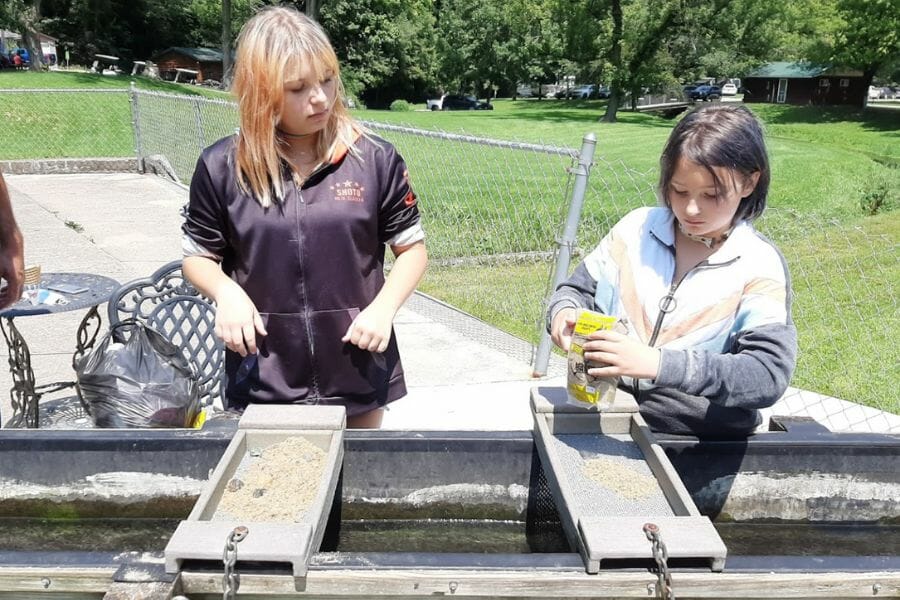
13299 Spook Cave Rd, McGregor, IA 52157, United States
Spook Cave and Campground is an outdoor adventure park located in the scenic town of McGregor. It is an excellent place for families and friends to enjoy gem hunting, camping, hiking, and more. Spook Cave offers a wide variety of activities to keep everyone entertained.
Gem mining is one of the campground attractions, and gem hunters can rent sluice boxes and pans to search for precious gems.
The Types Of Gemstones Found At Spook Cave And Campground
Some of the gemstones that can be found here are:
- Calcite
- Celestite
- Fluorite
- Gypsum
- Pyrite
- Quartz
The Best Time To Visit Spook Cave And Campground
The best time to visit Spooky Cave and Campground is in the summer. This is when the weather is warm and dry, making it the perfect time to explore the caves for gems and camp in the area. They are open year-round, but we got the best experience from our visit in the summer.
Other Great Options For Real Gem Mining in Iowa
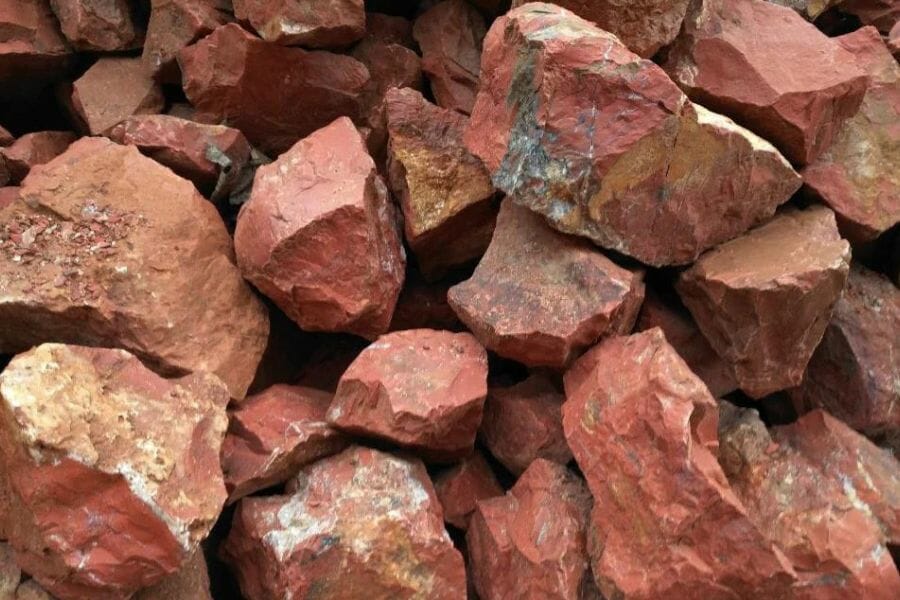
Our state offers even more amazing spots for real gem mining other than the list we’ve already recommended above. The following areas are perfect for experienced gem hunters:
- Backbone State Park – Dolomite
- Bell’s Mill Park – Calcite
- Des Moines River – Agate, Jasper
- Mines of Spain State Recreation Area – Dolomite
- Muscatine River – Agate, Chalcedony, Quartz
- Palisades – Kepler State Park – Dolomite
- Pikes Peak State Park – Agate, Jasper
- Skunk River – Agate
- Wapsipinicon State Park – Agate, Jasper
- Yellow Banks Park – Agate, Jasper
The Top Public Gem Mining Locations in Iowa
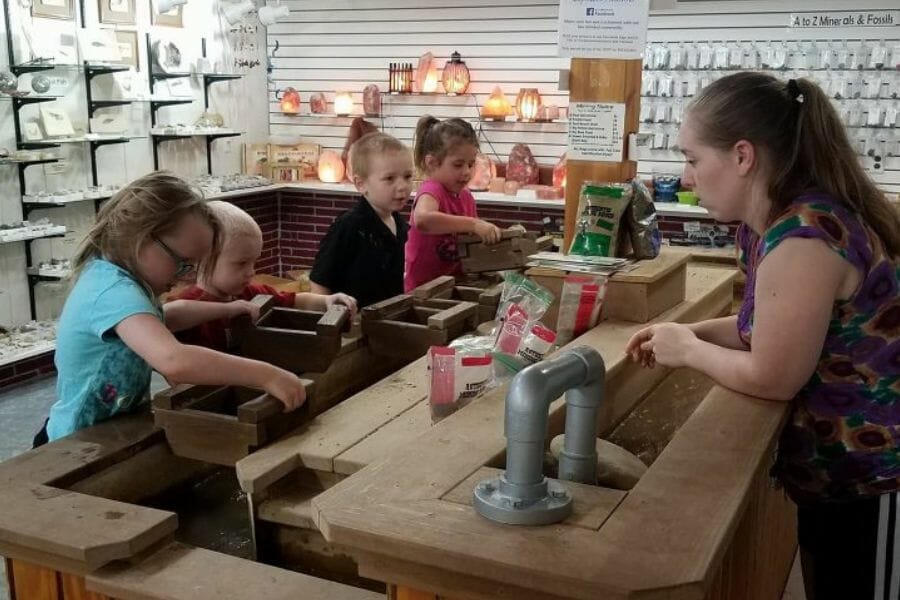
In our state, there are more places for public gem mining that are kid-friendly and teach kids about gems. Notable locations include the ones listed below:
- Bondurant City Park – Bondurant, IA 50035, United States
- The Noble Stone – 4510 220th Trail, Amana, IA 52203, United States
Iowa Gem Mining Laws And Regulations
In Iowa, all individuals engaging in gem hunting must obtain a permit from the Iowa Department of Natural Resources (DNR). The DNR issues permits for private landowners or public land owners who consent to collect on their property. The state’s regulations cover various topics, including the types of equipment and tools used, where hunting is allowed, and the size of any material collected. It is essential to be aware that some areas may be closed to collecting by law or ordinance.
For further details about Iowa’s gem mining laws and regulations, visit the Iowa Department of Natural Resources (DNR) website link above.
Additional Places To Mine For Gems In Nearby States
If you’ve already tried all of our recommendations above or are planning a trip out of the state you should check out our guides for neighboring states:
- Gem Mining in Illinois
- Gem Mining in Minnesota
- Gem Mining in Missouri
- Gem Mining in Nebraska
- Gem Mining in South Dakota
- Gem Mining in Wisconsin
If you have any recommendations we haven’t covered please leave them in the comments below!



